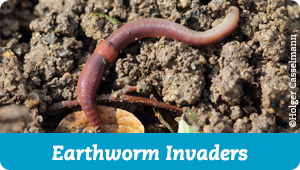The world is shrinking. Globalization has made it possible for goods, languages and ideas to cross oceans at speeds unheard of only decades ago. It has made it possible for species to jump continents as well.

Hull fouling. This ship’s hull is barely visible through the thick coating of organisms, including the tunicate Styela plicata. ©Ian Davidson
Invasive species are creatures that enter a new ecosystem and hurt the environment or the economy. They are not a new problem. Organisms have moved across the globe for as long as life has existed on Earth. But today it is happening on a larger, faster scale than ever before. Much of this is because the human race is able to move more quickly. As we send ourselves and our goods abroad, we often inadvertently introduce new life forms that we don’t notice until months or years later.
Once a new species takes root, it can be very difficult to eradicate. For that reason, the best defense ultimately comes down to prevention. Prevention starts with knowing how they travel. Invasions biologists look at how invasive species arrive on our shore in the first place—and how we in turn are exporting them to other shores.
Hull fouling
Commercial ships attract many hitchhikers as they travel. Larvae of aquatic animals, such as mussels or sea squirts, often latch onto the outside of ship hulls. It is a dangerous journey. Not all will survive the dramatic changes in temperature or salinity that come with transoceanic voyages. But the tougher organisms may grow to adulthood on the ship’s hull, and survive to release new larvae in the next port of call.

Tiny organisms often get sucked inside the ballast water of massive cargo ships.
Ballast Water
Smaller organisms often stowaway inside ship hulls, like the Greek warriors inside the Trojan horse. Giant cargo ships need ballast water in their hulls for stability. But when they take it up in one port and dump it in another, they inadvertently transport plankton and larvae with it. In the 1990s managers introduced the idea of open-ocean exchange: flushing ballast water out in the middle of the ocean, where it was hoped most invaders would be expelled, and the salinity change would kill those that remained. But not all ships pass through the open ocean on their journeys. Now they are searching for a way to treat ballast water on board.
Packing Material
Sometimes the most innocuous material can conceal a potential invader. Japanese stiltgrass (Microstegium vimineum) was once used to ship porcelain. Now, its green carpets smother the understory of many forests, keeping native saplings from growing. The algae used to ship fishing bait can also contain microscopic invaders. Fortunately this specific issue has a solution—instead of dumping unused bait in the water, it’s best to dump it in the trash.
Deliberate Introductions
Occasionally even the most well-intentioned managers make mistakes. It happened in the 1870s, when humans introduced Asian carp into a Baltimore pond to create a fishery. Little did they know the carp would prey on native fish eggs and make it difficult for other animals to survive. Other times people release their pets into the wild. Many believe this is behind the current python invasion of the Everglades.
These are just some of the most common ways invasive species cross into new territory. Not all new arrivals are dangerous—some are even beneficial. But it is generally better not to leave things to chance. By knowing where our coasts are most vulnerable, we can better protect them from future invasions.
Learn more!
Find out which ocean invaders SERC scientists are tracking in the Marine Invasions Lab. Learn about invasive plants and invasive earthworms in the Plant Ecology Lab, Terrestrial Ecology Lab and the Molecular Ecology Lab.


 Learn about invasive species in your area. Check out the
Learn about invasive species in your area. Check out the 

